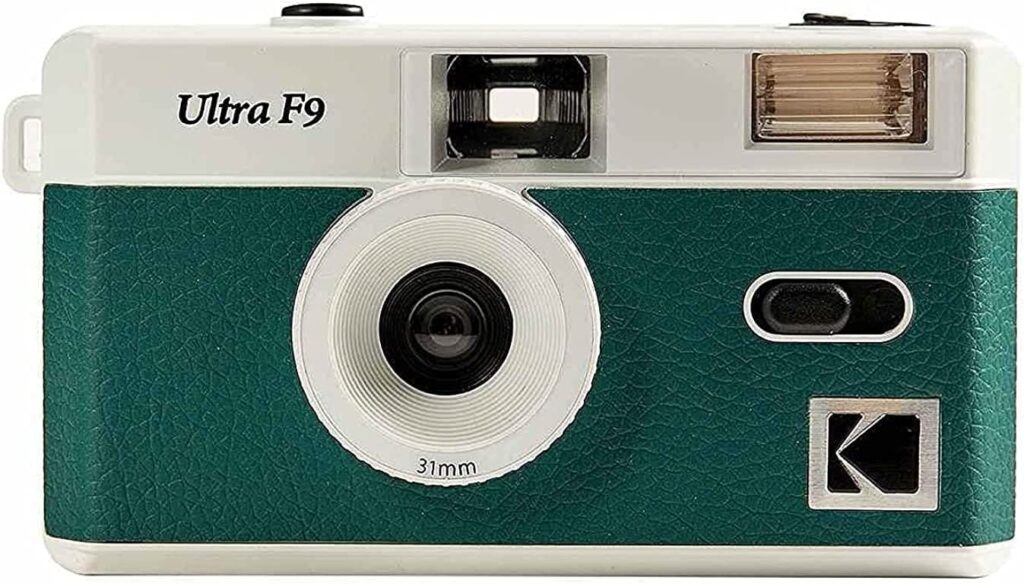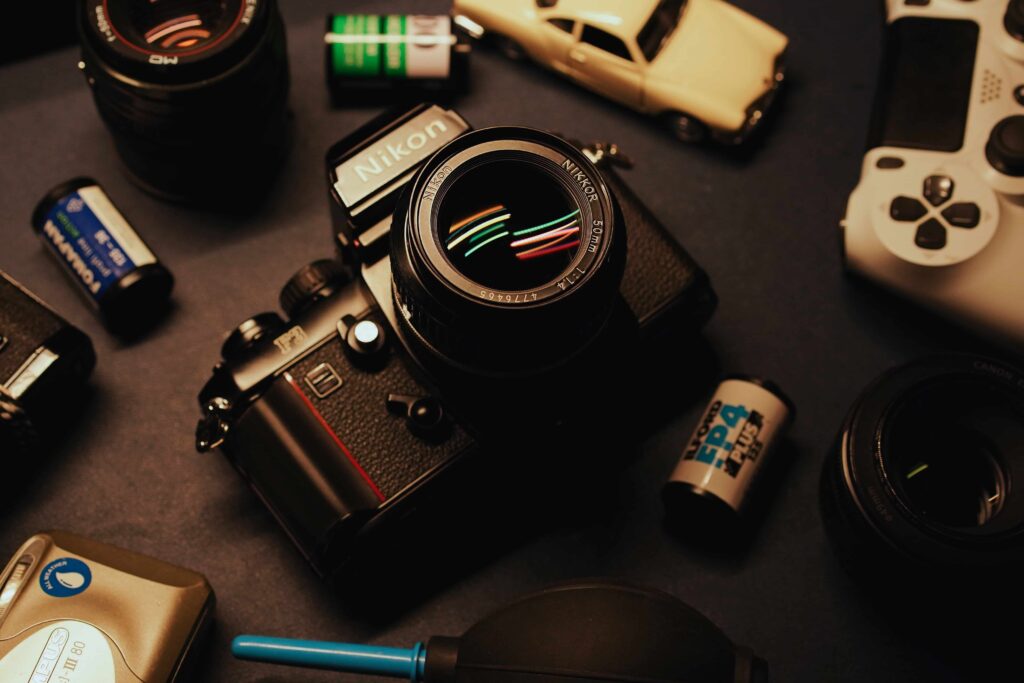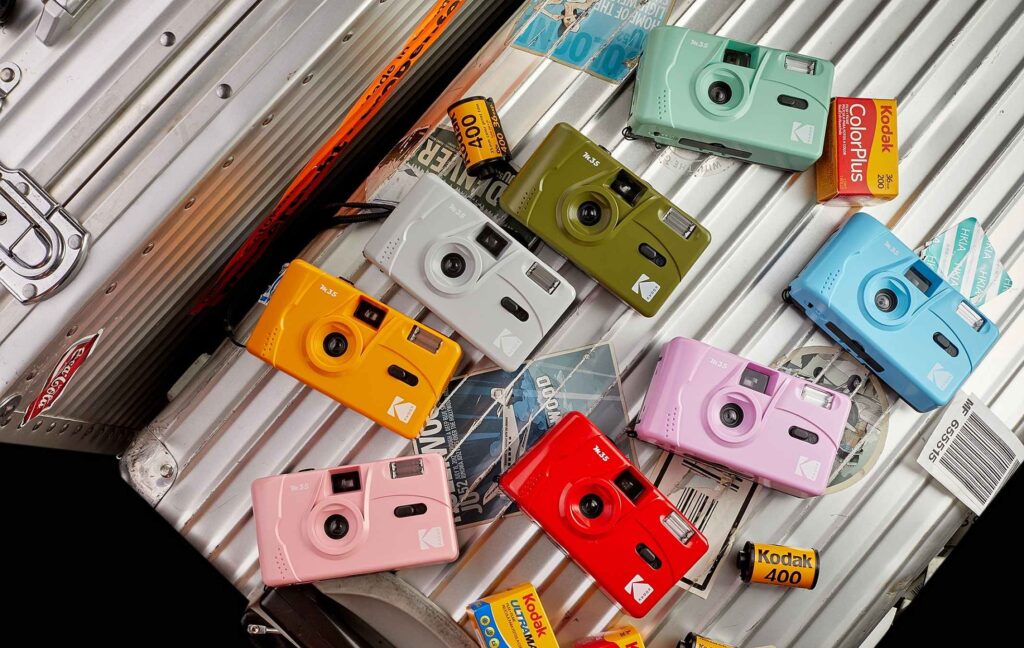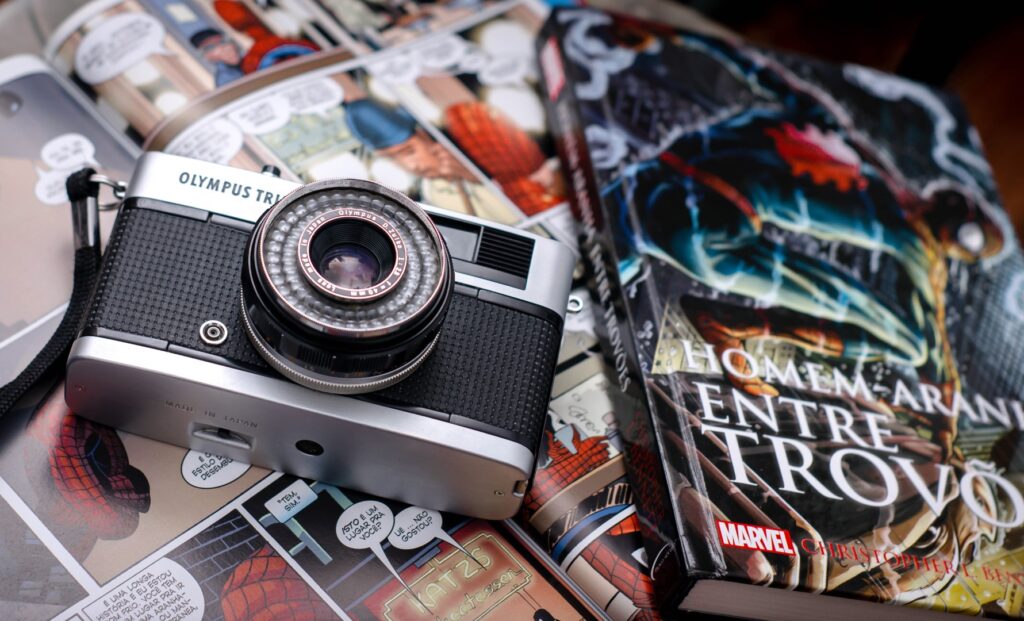Welcome to an insightful exploration of film photography! In today’s focus is the Kodak F9, a widely embraced, user-friendly point-and-shoot camera that masterfully marries the nostalgic allure of past decades with modern sustainability. This durable gem, known for its straightforward design and retro aesthetics, sparks anticipation as we eagerly await our developed pictures. An ideal tool for casual photographers and newcomers alike, the Kodak F9 adds a unique layer of pleasure to your travels, gatherings, or any well-lit everyday scenes. Without further delay, let’s unravel the intricacies of selecting the most suitable film for this delightfully simple yet evocative camera.
Selecting the Ideal Film for the Kodak F9
Picking the perfect film for the Kodak F9 extends beyond the film’s attributes. It requires a thorough comprehension of the camera’s distinct characteristics. This is a key factor since it can significantly affect the quality of the resulting images. Given the Kodak F9’s distinctive construction and constant features, choosing the right film becomes paramount.
With the Kodak F9, the best outcomes are achieved when the film selection aligns with the camera’s specifications, a topic we will explore more deeply in the following section.
Comprehending the Camera’s Specifications
In order to select the most suitable film for your Kodak F9, understanding the camera’s specifications is essential.
Film Size: The Kodak F9 utilizes 35mm film, a standard format in the world of analog photography. This availability provides a wide spectrum of film stocks for you to experiment with, be it color negative, black and white, or even slide films.
Lens and Focal Length: The camera is equipped with a 31mm fixed-focus wide-angle lens. The “fixed focus” characteristic denotes that the lens’s focus cannot be manually modified. It’s set to a specific range, usually optimized to deliver sharp images of subjects from approximately a meter to infinity. This attribute makes the Kodak F9 versatile for various scenarios such as landscape, street photography, and spontaneous snapshots.
Shutter Speed: The Kodak F9 has a constant shutter speed of 1/120th of a second. A “fixed” shutter speed signifies that it is unalterable. Consequently, the amount of light entering the camera remains the same for each shot, signifying that the film’s light sensitivity (ISO) will have a significant part in correctly exposing your photos.
Built-In Flash: The Kodak F9 comes with an integrated flash, which can prove useful when capturing images under low-light circumstances. However, this flash requires a AAA battery to function and has a recycle time of 15 seconds. While it can be beneficial for night photography, its range is confined, which should be taken into account when shooting in dimly lit settings.
The Integral Role of ISO or Film Speed in Selecting Film for the Kodak F9
ISO or film speed is pivotal when choosing a film for the Kodak F9, given its constant shutter speed of 1/120th of a second and a 31mm f/9 fixed-focus lens. ISO designates a film’s light sensitivity, where a higher ISO corresponds to greater sensitivity and vice versa. Since the camera’s ability to capture light is stable due to its fixed features, the ISO becomes crucial in managing diverse lighting situations.
It is generally advised to use films with an ISO rating between 200 and 400 for the Kodak F9. For bright, outdoor daylight scenarios, a 200 ISO film creates an equilibrium between mitigating the risk of overexposure and preserving color and detail precision. It’s an optimal choice for beginners or those seeking a more tolerant film adaptable to fluctuating light conditions.
In comparison, a 400 ISO film proves more advantageous under lower light conditions, offering higher light sensitivity. However, it’s vital to remember that a higher ISO may lead to increased graininess in your images. Depending on your preferred aesthetic, this could either add a certain retro appeal or potentially diminish the image quality if a crisper, more defined look is sought after. Therefore, comprehending your shooting environment and the visual effect you aim to achieve becomes essential when selecting the right film for the Kodak F9.
The Sunny 16 Rule and the Kodak F9
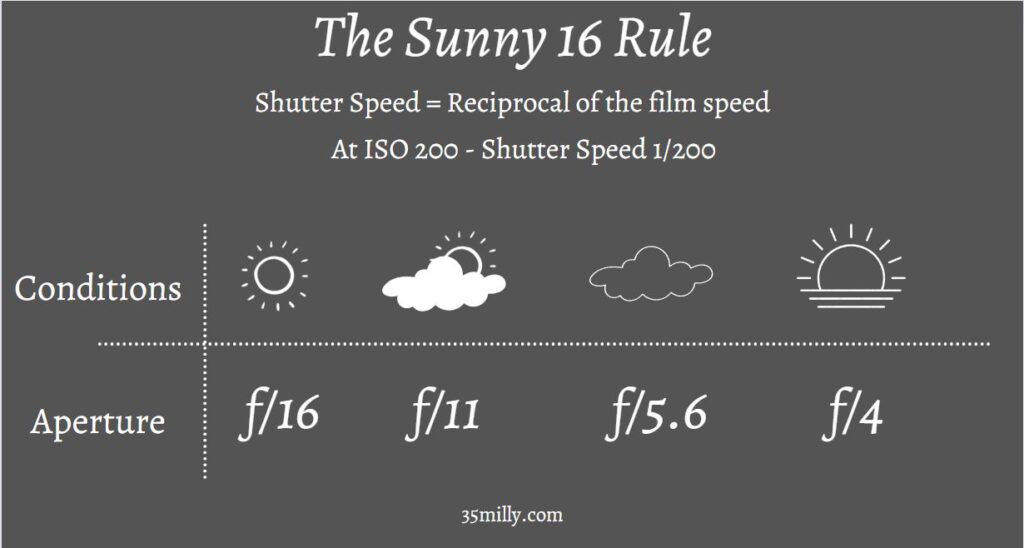
The Sunny 16 Rule is a valuable principle that assists photographers in determining the correct daylight exposures even without a light meter. Given the Kodak F9’s fixed aperture of f/9 and shutter speed of 1/120th of a second, this rule becomes particularly handy. Essentially, the Sunny 16 Rule provides a functional guideline for choosing the right ISO film according to the lighting conditions. With the Kodak F9, your choice of ISO becomes the key variable to ensure suitable exposure. Here’s a simplified guide:
| Aperture | Shutter Speed | ISO Film | Lighting Condition | Shadow Detail |
|---|---|---|---|---|
| f/9 | 1/120 | 200 | Bright sun, snow/sand | Dark with sharp edges |
| f/9 | 1/120 | 200 | Sunny, distinct shadows | Distinct |
| f/9 | 1/120 | 400 | Slightly overcast, soft shadows | Soft around edges |
| f/9 | 1/120 | 400 | Overcast, barely any shadows | Barely visible |
| f/9 | 1/120 | 800 | Heavy overcast, no shadows | No shadows |
| f/9 | 1/120 | 800 | Open shade/sunset/indoors | No shadows |
This table delineates how various lighting conditions and ISO film speeds interact with the Kodak F9’s fixed aperture and shutter speed. The suggested ISO film speeds and corresponding lighting conditions should serve as initial references, with adjustments based on your specific situation and experience.
Beyond the Sunny 16 Rule, a light meter app on your smartphone can serve as a useful instrument in determining the correct exposure. By configuring the app to f/9 and the ISO of your chosen film, you can measure how far the camera’s exposure diverges from the recommended shutter speed, aiding in making informed decisions when shooting.
Understanding the Concept of Exposure Latitude and its Importance
Exposure latitude refers to a film’s capacity to tolerate variations in light while still yielding a usable image. It’s quantified in ‘stops’, where one stop equates to a halving or doubling of light. A film with a broader exposure latitude can better handle light alterations, which is crucial when you’re utilizing a camera like the Kodak F9 with its fixed configurations.
Films proficient in managing excess light are particularly advantageous, as they usually cope better with overexposure than underexposure. So, a film that can handle being three stops too light or too dark and still deliver a satisfactory picture is highly desirable. This adaptability is beneficial when using the Kodak F9, especially for novice photographers or when light conditions are unpredictable. However, keep in mind that not all films perform alike. Some films, like slide film, can be less tolerant in challenging light situations. Thus, familiarizing yourself with your film’s exposure latitude can truly optimize your experience with the Kodak F9.
Balancing Cost and Quality
With its uncomplicated design and direct functionality, the Kodak F9 inspires the photographer to appreciate spontaneity and creativity. Its compact size makes it an ideal partner for all your explorations, inviting you to seize life as it unfolds.
Given the camera’s approachable nature, it might be prudent to opt for budget-friendly or even unconventional film types for the Kodak F9. These economical choices provide ample opportunity for discovery and experimentation, alleviating the stress of potentially squandering costly film on imperfect shots. Furthermore, these film types can bestow a distinct aesthetic to your photos, which enhances the Kodak F9’s innate allure.
However, if you prefer to save your high-end, premium films for a more control-laden camera, such as a fully-featured SLR, that’s entirely justifiable. But it’s crucial to remember that there are no strict rules regarding which film to use with the Kodak F9. Ultimately, your decision should be steered by your personal inclinations, the photography style you’re aiming to achieve, and, naturally, your budget.
Processing and Digitizing
The adventure with the Kodak F9 doesn’t merely conclude with capturing images; processing and digitizing your film are integral parts of the experience. There are two main routes to consider when it comes to processing your film: you can opt for the DIY approach at home, necessitating some specific tools and know-how, or you can entrust your film to a professional lab for processing. Similarly, the digitization process – transforming your negatives into digital files – can be undertaken individually with a film scanner or professionally at a lab. It’s worth noting, the settings employed during digitization can profoundly impact the final look of your photos.
Should you choose to rely on a lab for the processing and digitizing operations, ensure to ask about their fee structure. Comprehending the costs involved is vital to avoid any unwelcome surprises.
Getting Familiar with Diverse Film Categories: Color, Black and White, and Slide Film for the Kodak F9
Color Negative Film: This class of film is robust and well-suited to a myriad of situations. Renowned for its management of overexposure and satisfactory exposure latitude, color negative film could be a top-notch choice for the Kodak F9. Kodak Ultramax 400 or Agfa Vista 200 are examples of these films. If you’re contemplating high-end color film, bear in mind the need to balance the expense with the practicality of using it in a camera with fixed settings like the F9.
Black and White Film: For enthusiasts drawn to grayscale imagery, black and white film creates pictures with unique depth and texture. Typically affordable and an ideal option for novices interested in home processing, as the procedure is simpler than with color film. With commendable exposure latitude and a range of budget-friendly choices from brands like Ilford, Kodak, and Foma, black and white film offers a flexible choice for the Kodak F9.
Slide Film: While slide film can deliver remarkably vivid and intricate photographs, it may not be the prime choice for the Kodak F9. Its limited exposure latitude and elevated price might not be well-suited for a camera where you can’t manually adjust the aperture or shutter speed. As a result, the produced images may not entirely exploit the prowess of slide film, rendering it a possibly less cost-efficient alternative for the Kodak F9.
Best film Options for the Kodak F9
Color Films
Fujifilm Fujicolor 100: An excellent selection for bright light photography, Fujicolor 100 yields realistic, vivid colors while maintaining grain at minimal levels. With its low ISO, it ensures that your open-air photos will be rich in detail and free from grain. As it possesses a relatively narrow exposure latitude, this film is better suited to experienced photographers who can adeptly assess light conditions. See current prices here.

Kodak Gold 200: As a versatile and user-friendly film, Kodak Gold 200 strikes a good balance between light sensitivity and grain presence. It has a wider exposure latitude compared to Fujicolor 100, making it a more flexible choice for unplanned shoots. The ISO 200 rating pairs well with the Kodak F9’s fixed aperture and shutter speed, offering a certain level of adaptability even under suboptimal lighting. This film is known for its fine grain, which translates into sharper images when printed or viewed at full-frame photo size. It’s a film that beginners should certainly experiment with. Check current prices here.
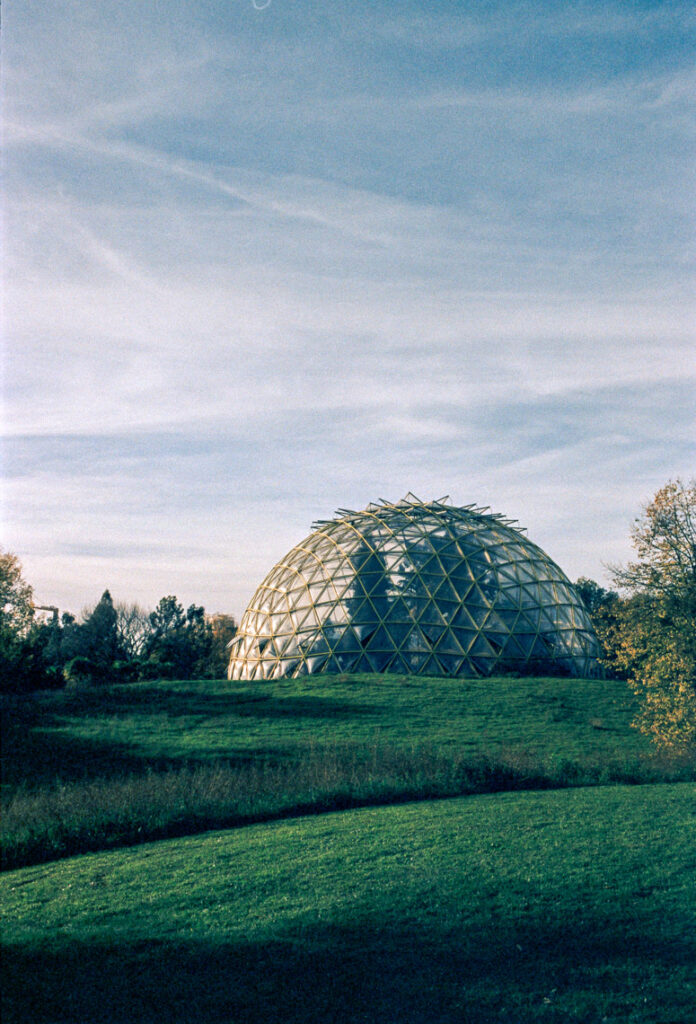
Lomography 400 Color Negative: This film is an appropriate choice for photographers working in varied or dimly lit conditions, as its higher ISO rating allows for increased versatility. With the rise in ISO, images also exhibit increased grain, which can be seen as an artistic plus, enhancing the nostalgic charm of your shots. This film boasts a wide exposure latitude, making it more tolerant of exposure discrepancies, a useful trait given the Kodak F9’s fixed parameters. It’s worth noting that the grain might be more visible, yet this can give your photos a unique, retro appeal. Check current prices here.
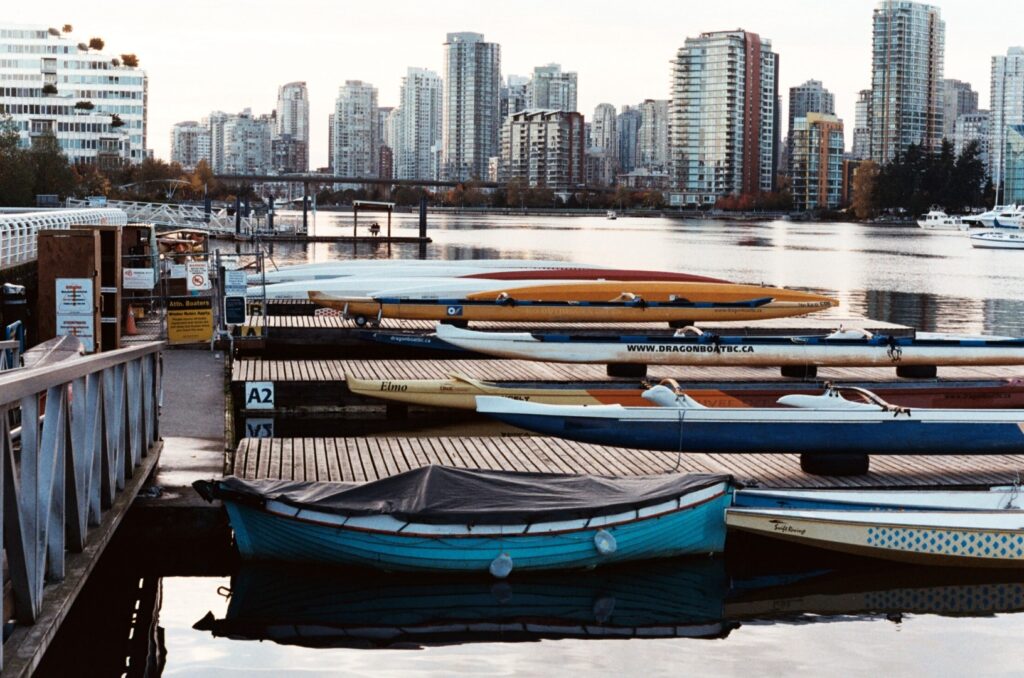
Black and White Films
Ilford Pan F Plus 50: This film stands out for its extraordinarily fine grain and superior resolution, delivering sharp, intricate images, especially in well-lit conditions. While its lower ISO rating may seem daunting, it synergizes well with the Kodak F9 under the right lighting conditions. This film generates images with stellar contrast and a wide tonal range. However, it’s important to note that it has a relatively narrow exposure latitude, necessitating precise exposure. It’s an ideal choice for sunny days when your goal is to capture detailed, high-contrast black and white images. Check current prices here.

Fomapan 200 Creative: If you’re seeking a distinctive artistic vibe, Fomapan 200 Creative could be your top pick. Renowned for its fine grain, high sharpness, and satisfying contrast levels, it also boasts a generous exposure latitude. This lenient characteristic is a significant advantage when working with the Kodak F9’s fixed parameters. You can achieve delightful results in a wide array of lighting situations, from bright outdoor settings to somewhat dimmer environments. Its ISO 200 rating provides a decent measure of flexibility, producing fairly sharp images without excessive grain. Check current prices here.

Kentmere 400: A budget-friendly choice for those mindful of cost yet still desiring high-caliber outcomes. Kentmere 400, produced by Harman Technology (the same firm behind Ilford films), is recognized for its fine grain and exceptional sharpness. With its ISO 400 rating, it offers versatility, making it an ideal choice for the Kodak F9 across diverse lighting conditions. While it may not be as renowned as Kodak Tri-X, it competes strongly in terms of image quality, offering a high degree of detail and contrast. With its reasonable pricing and robust performance, it’s a top pick for photographers experimenting with the Kodak F9. Check current prices here.
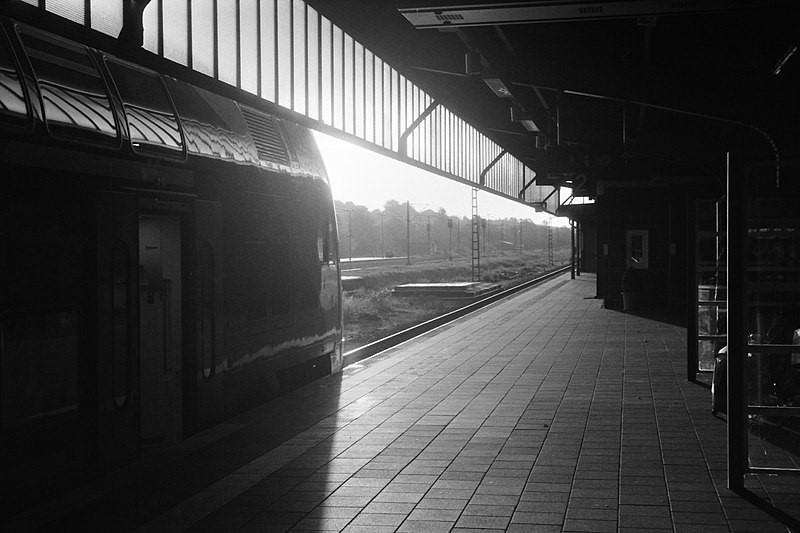
Experimental Film Options
Lomography LomoChrome Purple XR 100-400: Looking for a unique twist? This film could be the answer. LomoChrome Purple XR 100-400 magically transforms green tones into enchanting purples for an ethereal effect. If you’re excited to experiment and add a dash of fantasy to your images, this film is an excellent option. Check current prices here.
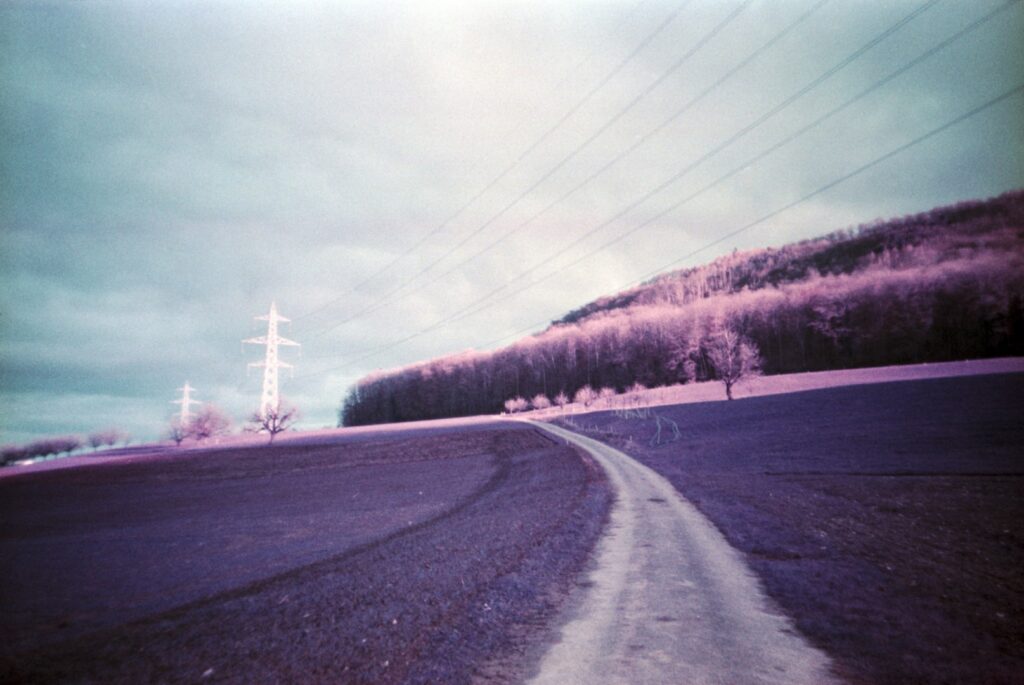
Revolog Kolor: Want whimsical and unexpected outcomes? Revolog Kolor instills your photographs with random color effects and streaks, lending each image a unique charm. It’s ideal for photographers who value unpredictability and creativity in their work. Check current prices here.

KONO! Monolit: This is not your standard black and white film. KONO! Monolit has been pre-exposed to create high-contrast, evocative effects, adding a surreal spin to your photos. If you’re keen to push the envelope with your Kodak F9 and produce visually bold and surprising images, this film will add an extra layer of thrill to your photographic journey. Check current prices here.

Choosing the Ideal Film: Where to Buy
There are various avenues to explore when buying film for your Kodak F9:
Amazon: Offering a vast range of film stocks from a multitude of manufacturers, Amazon is an ideal starting point for your film shopping. It provides competitive pricing, insightful customer reviews, and the ease of doorstep delivery. You can leisurely browse and pick the most suitable film for your camera while sitting at home.
eBay: If you’re seeking rare or discontinued film stocks, eBay could be your go-to platform. It’s also an excellent place to grab bargains on film. However, it’s important to buy from trustworthy sellers to sidestep any potential issues with film quality.
Dedicated Online Stores: Websites specializing in film photography, such as The Film Photography Project, Freestyle Photographic Supplies, and Analogue Wonderland, boast a comprehensive selection of film types. These platforms not only supply a vast assortment, encompassing less common and experimental films, but also furnish valuable insights on film photography, enriching your photographic journey.
Local Camera Stores: Don’t forget to check out your local camera outlets and specialized photography shops. While their selection may not be as expansive as online platforms, these stores offer the benefit of hands-on advice from experienced professionals. Their expert staff can help guide your choice of the right film for your Kodak F9.
No matter where you purchase your film, it’s crucial to ensure that it has been stored properly—in a cool, dry environment—and to always check the expiration date. Using film before it expires will enhance your chances of achieving optimal results.
Frequently Asked Questions about using Film in the Kodak F9
Can I use black and white film in my Kodak F9?
Absolutely, you can certainly use black and white film in your Kodak F9. Black and white film can lend a distinctive depth and texture to your images, making it an excellent choice for those who appreciate the timeless appeal of monochrome photography. It’s generally cost-effective, and the developing process is typically less complex than that of color film, which can be a great advantage if you’re planning on processing the film at home.
Is it possible to use slide film with the Kodak F9?
Yes, it is possible to use slide film with the Kodak F9. However, please bear in mind that slide film usually has a narrower exposure latitude and is often more expensive than other film types. This means it might not be the most compatible choice with a camera with fixed settings like the Kodak F9, as the resulting images may not fully utilize the unique qualities of slide film. However, if you’re up for a challenge and want to experiment, go ahead!
What is the best ISO for the Kodak F9?
The best ISO for the Kodak F9 would typically be in the 100-400 range. This camera is versatile and can handle a variety of lighting conditions, but a film with an ISO between 100 and 400 provides a balance between light sensitivity and image grain. Lower ISO films (100 or 200) are perfect for bright or sunny conditions, while higher ISO films (400) will perform better in cloudy or low-light scenarios.
Can I develop film from the Kodak F9 at home?
Yes, you can definitely develop film from the Kodak F9 at home, especially if you are using black and white film, which has a simpler developing process compared to color film. You’ll need some specialized equipment and chemicals, but many photographers find home developing to be a rewarding part of the film photography process. There are plenty of guides available online to help you get started.
What happens if I use expired film in the Kodak F9?
Using expired film in your Kodak F9 can lead to varied results. Some photographers use expired film purposefully for its unpredictable effects, which can add a unique artistic element to your photos. However, please note that the colors might shift, contrast may decrease, and grain could increase. If you’re after consistent and reliable results, it’s recommended to use film before its expiration date.
How can I ensure the best image quality with my Kodak F9?
Ensuring the best image quality with your Kodak F9 involves multiple factors. First, selecting a film that suits your desired aesthetic and the lighting conditions is key. You also need to consider the film’s exposure latitude and your ability to predict lighting conditions accurately. Also, properly caring for your film, such as storing it in a cool, dry place and using it before its expiry, can significantly affect the quality of your images. Finally, developing and scanning your film with care will contribute to achieving the best possible image quality.
Can I use the Kodak F9 for professional photography?
The Kodak F9 is a fantastic tool for photography enthusiasts and can certainly be used for professional photography, depending on the situation. Its straightforward functionality makes it a reliable choice for street photography, documentary work, and portraiture. However, for assignments requiring a high degree of control over settings or in challenging lighting conditions, you might prefer to use a more feature-rich camera.

